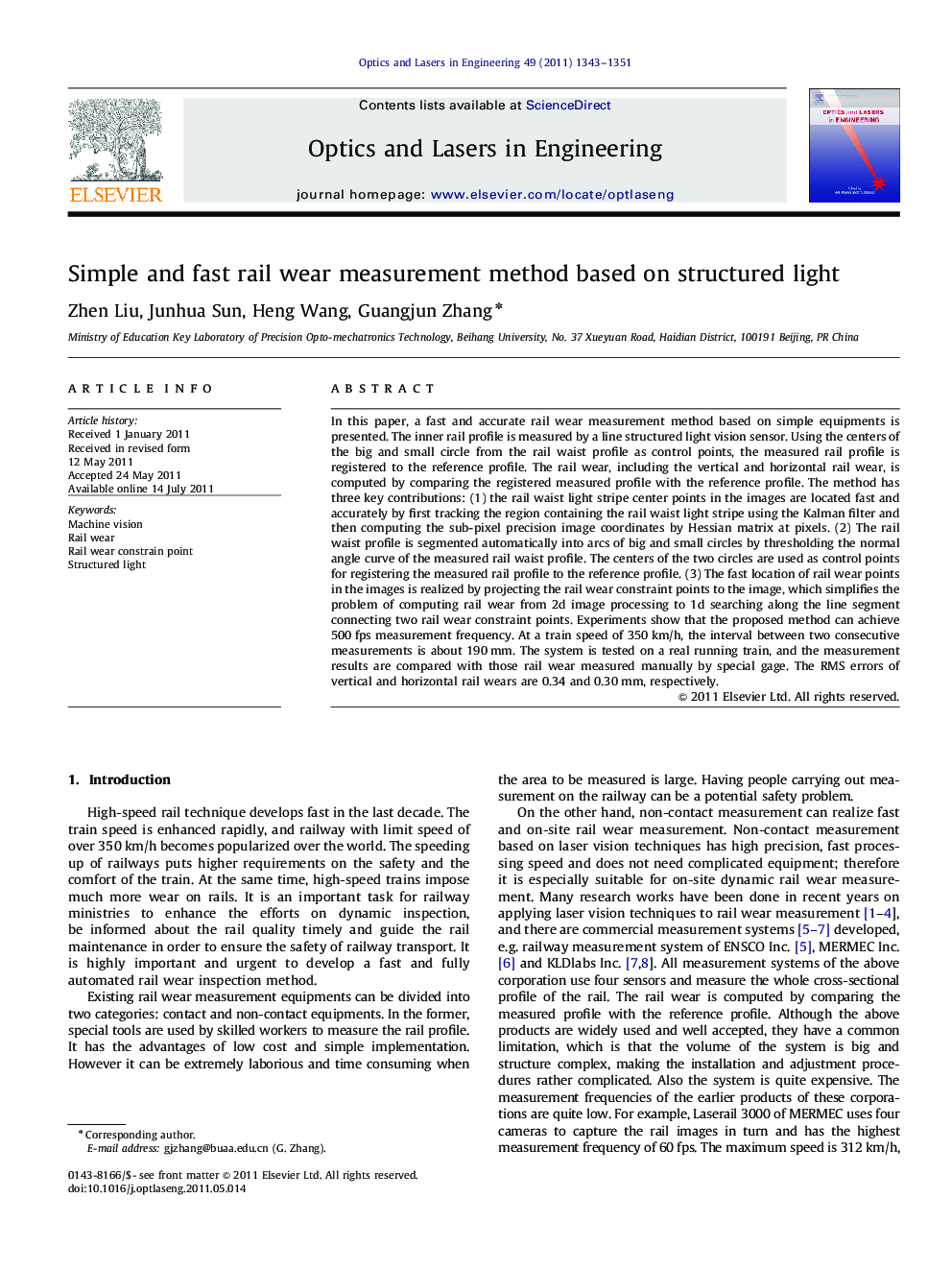| Article ID | Journal | Published Year | Pages | File Type |
|---|---|---|---|---|
| 736116 | Optics and Lasers in Engineering | 2011 | 9 Pages |
In this paper, a fast and accurate rail wear measurement method based on simple equipments is presented. The inner rail profile is measured by a line structured light vision sensor. Using the centers of the big and small circle from the rail waist profile as control points, the measured rail profile is registered to the reference profile. The rail wear, including the vertical and horizontal rail wear, is computed by comparing the registered measured profile with the reference profile. The method has three key contributions: (1) the rail waist light stripe center points in the images are located fast and accurately by first tracking the region containing the rail waist light stripe using the Kalman filter and then computing the sub-pixel precision image coordinates by Hessian matrix at pixels. (2) The rail waist profile is segmented automatically into arcs of big and small circles by thresholding the normal angle curve of the measured rail waist profile. The centers of the two circles are used as control points for registering the measured rail profile to the reference profile. (3) The fast location of rail wear points in the images is realized by projecting the rail wear constraint points to the image, which simplifies the problem of computing rail wear from 2d image processing to 1d searching along the line segment connecting two rail wear constraint points. Experiments show that the proposed method can achieve 500 fps measurement frequency. At a train speed of 350 km/h, the interval between two consecutive measurements is about 190 mm. The system is tested on a real running train, and the measurement results are compared with those rail wear measured manually by special gage. The RMS errors of vertical and horizontal rail wears are 0.34 and 0.30 mm, respectively.
► System requirement is simple. ► System can achieve 500 Hz or higher measurement frequency. ► Experimental results demonstrate both robustness and accuracy of the system.
